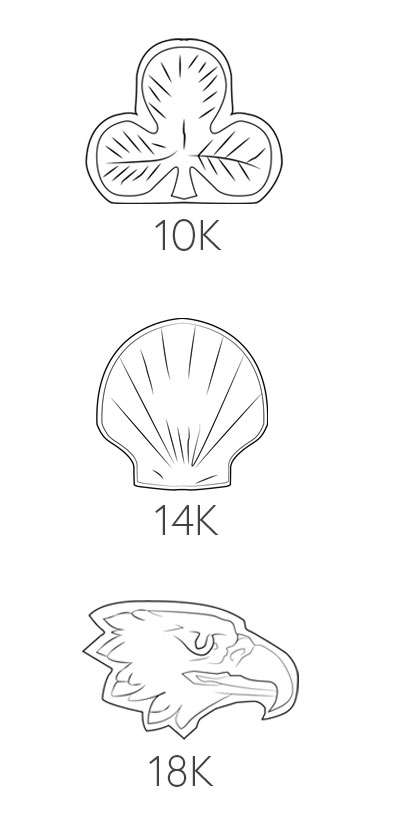
How do you know if a piece of jewelry is gold?
Usually, the purchase of gold jewelry is done in an atmosphere of trust. We like to know what we are getting and we prefer certain places to do it. In some cases, the question of real gold may arise if we are purchasing in an unusual context such as when traveling abroad. Is it really 10 carat , 14 carat , 18 carat or just gold plated jewelry? And if your grandmother is donating her jewelry to you, how do you separate sterling silver-plated jewelry from real gold? Sometimes jewelry tarnishes and appears worthless. Don't always be fooled by appearances. All that glitters is not gold and vice versa. Here are some steps to follow to find out if the jewelry you have in your hands is gold.

The punch
The first thing you look for on a piece of gold jewelry is its hallmark. If the jewelry is designed in Europe for example, the hallmarks appear as symbols and are often placed to be easily identifiable. The eagle's head means 18 carats, the shell, 14, and the clover, 10. In Canada, the hallmark is more discreet, often hidden and simply indicates the grading as follows: 10K, 14K or 18K. 24K gold or pure gold is used very rarely in jewelry. Here as in Europe, the numbers 750 (18K), 585 (14K) and 417 (10K) are also used and represent the concentration of pure gold in the alloy based on the value 1000. If the jewelry is gold plated, the punched number is followed by a p or a gf (goldfilled).

European hallmark
The missing punch
A piece of jewelry can lose its hallmark following resizing, some polishing or simply because of wear. In addition, it even happens that some jewelry artisans simply do not use it from the start. So how do you know if a piece of jewelry is gold if there are no hallmarks? There are other small tests that you can do quickly before going to a jewelry store to have it evaluated.
A weight, a magnet, a color
Gold is a heavy precious metal, much heavier than lead and silver. If you perceive that the ring or chain carries its weight well, there is a good chance that it is gold. On the other hand, it happens that some lower quality gold jewelry is empty inside and this could distort the situation. The second test requires a small magnet. If the jewelry is attracted to the magnet, it is definitely not gold. Other metals are attracted to it but not gold. Finally, if your jewelry shows signs of discoloration on the edges due to wear, the jewelry is gold plated and not entirely gold. Real gold does not discolor regardless of the number of carats. And take our word for it, it's not white gold underneath.
Chemistry to the rescue
All it takes is a simple chemical test to find out the carat of your gold. First of all, if we want to know if a piece of jewelry is gold , we rub it on a touchstone or a ceramic tile. Scratch resistant, these surfaces will force the jewelry to leave a little metal on it. Then you test three different nitric acid mixtures associated with the three different carats starting with the highest. (18K, 14K, 10K). You get your answer when mixing doesn't make the gold line disappear. Click at the bottom of the paragraph to watch the video of the co-founder of Flamme en rose. She uses concrete examples to better understand. At Flamme en rose, gold no longer holds any secrets for our master jewelers. The jewelry store will even buy back your gold if that is your decision. On the other hand, we strongly suggest that you transform your jewelry instead of selling it. We are the best place in Quebec for this type of service which allows you to recycle your precious stones and metals to create a brand new piece of jewelry. Do not hesitate to contact us for further information.
Get an online consultation with one of our jewelers today.


